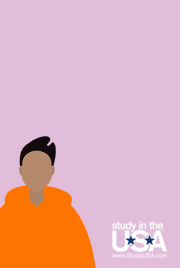TOEFL iBT Test – Strategies to Beat the Reading Section

By Pietro Rossini
If you have the intention to come to study in the U.S., you will soon find yourself involved with the preparation for the TOEFL iBT test. Any university and college will ask you for a TOEFL score. Every institution has different requirements. To apply for some, you will need a score of 80 while for others, it is 90 or 100 out of 120. Moreover, some colleges may ask you for a specific minimum partial score in one of the four sections of the test. In this guide, we will explain what the TOEFL is and some strategies to beat the reading section.
First of all, let’s see what TOEFL is and how it works. TOEFL iBT Test is a standardized test that measures your level of English in four sections: reading, listening, speaking, and writing. Each section has its own evaluation parameters and strategies to apply to beat the test. However, every section is graded on a scale from 0 up to 30 points. So that the maximum TOEFL score is 120. In the TOEFL test, I got 103/120, and in the reading section 30/30; therefore, I will share with you the strategies that I used to achieve that score. In this article we will take a closer look at the reading section:
Strategies for the reading section
In the reading section, you will find 3-4 academic passages and 10 questions for each. You will have 18 minutes for each passage and a maximum time of 54-72 minutes to complete the whole reading part.
There are 8 different kinds of questions in the reading part. And you need to know one different strategy for each one of them to beat this part. First of all, DO NOT READ THE WHOLE PASSAGE! Don’t waste your time, just follow these rules:
Vocabulary questions
The first kind of reading question is the vocabulary question. You will find these questions with a frequency of 3-6 times per section. They simply ask you to find a synonym of a word present in the passage. For this type of question, you don’t need to read anything from the passage! You must pick the closest synonym of the word in the question between the answer choices. Do not read the passage at all.
Details questions
These are the most common questions in the reading section (4-8 per section). These questions will ask you to find some details in the passage. First, read the question and look for keywords such as specific names or dates. Then skim and scan the paragraph indicated in the question until you find those words. Now, just read the sentence before and the one after those keywords. The answer to the question is right there! Do not read anything else because the wrong answers are in the rest of the passage.
Negative detail
These are the questions that ask you to find what is missing in the passage. They may be introduced with these sentences: “All of the following are mentioned in the paragraph # EXCEPT…” or “Which of the following is NOT mentioned in the paragraph #.” Here you have to be careful to pick up the UNMENTIONED answer. So, these are the only questions where you look at the answer choices first (in all the other kinds you will look at them only at the end when you have already found the answer in the passage). Look for keywords, this time, in the answer choices and skim and scan the passage to see if they are present in the text. Pick the one that is NOT MENTIONED in the passage as the correct answer.
Author purpose
These are the kinds of questions that sound like this: “Why does the author mention…?” For this kind of question, you need to look for what is after “mention…” in the passage. When you find it in the passage, read the sentence before and after and ask yourself “WHY does the author say this?” Then pick the correct answer according to what you have just found.
Paraphrasing
In these questions, you will be asked to paraphrase part of the passage. Or in other words, to pick the answer that expresses all the ideas made in the highlighted sentence. The strategy is a little bit complex for this kind of question, but it’s not impossible. First, read the highlighted sentence and look for the subject, verb, and object. This is important because the correct answer is the ONLY ONE that will have the subject, verb, and object in the same order. But be careful that the correct answer may use synonyms of the subject, verb, or object of the sentence in the passage. But, it's important that the order will be the same.
Sentence insertion
These kinds of questions are pretty easy to solve. Everything you need to follow for these questions is your logic. Indeed, in this question, you will be asked to insert a sentence in the passage. You will choose between 4 different places in the text. The strategy is simple: look for words in the sentence that may be connected with the prior or next sentence. Now, look up the passage and try to find a connection between the sentence and the other sentences. Remember that you may eliminate choices where there is no connection between them. For sure that is not the correct answer.
Inference question
This is the hardest question for the reading part. Fortunately, you will find just 2-4 of them in the whole reading section. The bad news is that there is no strategy for this kind of question. But I give you two suggestions: first, eliminate the choices that use exactly the same words present in the passage; second, skip this question and answer it at the end of the passage. Indeed, it takes about 5-7 minutes to answer this question correctly. This is the same amount of time to answer 2-3 other questions. Moreover, the inference question is worth 1 point just like the others. So, skip it to use your time to answer other questions correctly, and then, you will go back to answer this one.
Summary question
Each reading passage ends with this kind of question. In the summary question, you have to choose three summary sentences among the six. The strategy is to use the button “Review” right on the top of the screen. Look back at your previous answers and pick the three summary sentences that are already mentioned in your previous answers. This is a great tip. You won’t find it so easily, so take advantage of it. And remember, DO NOT READ the whole passage. It doesn’t work, and it just confuses you.
A strategy that works for almost every question
In addition to these previous strategies, if you are in a panic, and you really don’t know which choice may be the correct answer, then go for elimination. Eliminate all the answers that are not correct instead of looking for the one that is. This strategy works for almost every question, but use it just when you don’t know the correct answer. In fact, if you use the previous strategies you will save time, and you will answer more questions correctly.
Free websites where you can practice for the TOEFL iBT test
These strategies are not magic or superstition. They need practice to be effective. It is like when you are learning how to play an instrument. You need to spend time on it applying the correct exercises. The same is with the TOEFL iBT test. The more you practice (correct strategies), the better and faster you become answering the questions.
Here there are some websites that you can use for free for your test practice:
Toeflbank.com – a Korean website where you can practice the 4 sections. I like this tool because it is the only one that gives you feedback also for the speaking and the writing part. Moreover, with your free account, you will get advice on how to get your score goal.
Weixue100.com – a Chinese website that contains tons of free tests. Nice for practicing all sections, but particularly the reading part because you can choose one passage at a time.
Zabanexam – an Iranian website that contains full free practice for the four sections. There is only one limit: outside Iran, you need a VPN to use it.
Toeflmocks.com — a great tool for students that are studying for the TOEFL
Keep following studyusa.com for more tips about TOEFL iBT test tips. In the next few weeks, you will find other tips for the other three sections.
Pietro Rossini is a Xaverian Missionary and ESL student at Framingham State University. He came to the U.S. in January 2020 with the purpose of studying for a master of arts in journalism at Boston University. His dream is to collect and share stories of humanity around the globe, making the world a single family.


























